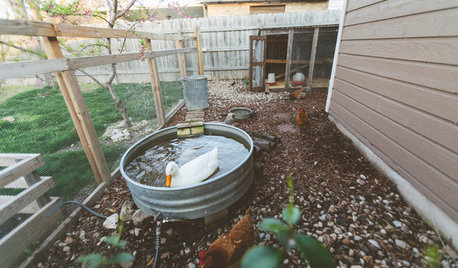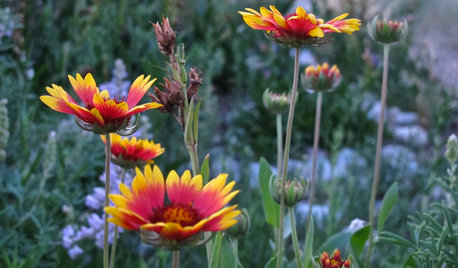Growing Fava beans in Northeast Arkansas - UPDATE!!
greentongue
16 years ago
Related Stories

SUMMER FRUITS AND VEGETABLESSummer Crops: How to Grow Beans
Grow your own beans for amazing variety and healthy, convenient produce all summer
Full Story
GARDENING GUIDES10 Easy Edibles for First-Time Gardeners
Focus on these beginner-friendly vegetables, herbs, beans and salad greens to start a home farm with little fuss
Full Story
FARM YOUR YARDMy Houzz: An Urban Farm and Animal Sanctuary in Austin
Four dogs, four chickens, a duck and a kitten find refuge in a photographer’s updated home
Full Story
GARDENING GUIDESThese Hummingbird-Attracting Native Plants May Surprise You
These flowers, vines and shrubs offer shelter and food supplies that keep hummingbirds around longer
Full Story
FARM YOUR YARDAdvice on Canyon Farming From L.A.'s Vegetable Whisperer
See how a screened garden house and raised beds help an edible garden in a Los Angeles canyon thrive
Full Story
FARM YOUR YARDHow to Build a Raised Bed for Your Veggies and Plants
Whether you’re farming your parking strip or beautifying your backyard, a planting box you make yourself can come in mighty handy
Full Story
FALL GARDENINGHouzz Call: Show Us Your Fall Color!
Post pictures of your fall landscape — plants, leaves, wildlife — in the Comments section. Your photo could appear in an upcoming article
Full Story
BATHROOM DESIGNRoom of the Day: A Family Bath With Vintage Apothecary Style
A vintage mosaic tile floor inspires a timeless room with a new layout and 1930s appeal
Full Story
LIFEThe Wisdom of Kenny Rogers, for Declutterers
No need to gamble on paring-down strategies when the country music legend has already dealt out some winning advice
Full StorySponsored






Macmex
greentongueOriginal Author
Related Professionals
Ashland Landscape Architects & Landscape Designers · Suffern Landscape Architects & Landscape Designers · Peabody Landscape Contractors · Springfield Landscape Contractors · Matthews Landscape Contractors · Bethel Park Landscape Contractors · Holtsville Landscape Contractors · McLean Landscape Contractors · North Haven Landscape Contractors · Quincy Landscape Contractors · Webster Groves Landscape Contractors · Westchester Landscape Contractors · Antioch Landscape Contractors · Carmel Decks, Patios & Outdoor Enclosures · Dearborn Decks, Patios & Outdoor Enclosuressoonergrandmom
Macmex
greentongueOriginal Author
greentongueOriginal Author
greentongueOriginal Author
operamom